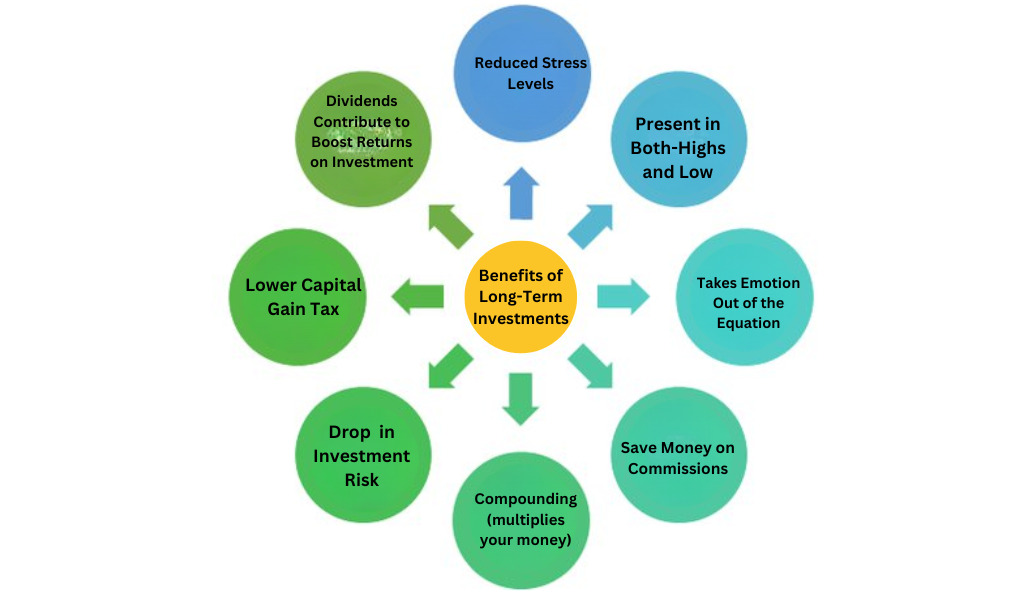Many of us envision our retirement years as a time of relaxation and enjoyment, but the path to a stress-free retirement requires planning, discipline, and smart financial decisions. A strategic long-term investment approach can help you achieve that dream retirement. Let’s delve into how you can structure your investment strategies for a comfortable future.
Understanding the Importance of Long-term Investment
It’s vital to grasp the significance of long-term investment strategies when planning for retirement. Short-term market fluctuations can be unsettling, but history has shown that the market trends upwards over extended periods. Furthermore, long-term investments can benefit from the effects of compound interest, allowing your wealth to grow exponentially. The key lies in patience and consistency; after all, Rome wasn’t built in a day, nor will your retirement fund. Think of it like planting a tree; it takes time to bear fruit, but once it does, the results can be plentiful.

Setting Clear Retirement Goals
Retirement might seem like a distant dream, but it’s crucial to visualize it in clear terms.
- Why Goal Setting is Crucial
Having a clear roadmap for your retirement goals can significantly influence your investment choices. It provides direction and purpose, ensuring that every financial move aligns with your desired future. Moreover, setting goals allows you to track progress, celebrate milestones, and adjust strategies when necessary. Like a ship’s captain, without a destination in mind, you might find yourself lost at sea. - Determining Your Retirement Needs
Determining your retirement needs requires a holistic approach. Consider factors like the lifestyle you aspire to, potential health concerns, and even legacy goals. Take inflation into account, as the purchasing power of money decreases over time. An honest introspection can give you clarity, helping you set a realistic savings target. Remember, it’s not just about surviving your retirement but thriving during it.
Diversifying Your Portfolio
The age-old adage “Don’t put all your eggs in one basket” holds exceptionally true for investing.
- The Essence of Diversification
Diversification is an investment strategy to spread risk. Different asset classes respond differently to market events; while one may suffer a downturn, others might flourish. By diversifying, you mitigate risks and provide a safety cushion for your investments. Consider it like having a balanced diet; each nutrient plays its part in ensuring overall health. - Examples of Diversified Investments
From stocks and bonds to real estate and commodities, a plethora of investment opportunities await. While stocks offer potential high returns, they come with higher risks. Bonds, being more stable, often provide consistent but lower yields. Real estate can act as a hedge against inflation, while commodities can be more volatile but offer diversification benefits. It’s all about finding the right mix for your risk tolerance and goals.
Embracing Compound Interest
Often referred to as the eighth wonder of the world, compound interest has transformative power. By reinvesting the returns you earn, you create a snowball effect, where your earnings generate even more earnings. Over the years, this can result in a substantial growth in your investments. For example, even if two people invest the same amount, the one who starts earlier can accumulate significantly more due to the magic of compounding.
Investing in Retirement Accounts
With the myriad of retirement accounts available, it’s essential to understand their nuances.
- 401(k) and Traditional IRA
Both the 401(k) and Traditional IRA offer tax-deferred growth, meaning you pay taxes only upon withdrawal. By contributing pre-tax dollars, you effectively lower your taxable income now and might benefit if you fall into a lower tax bracket in retirement. Additionally, many employers offer 401(k) match programs, which is essentially “free money” for your retirement. - Roth IRA and SEP IRA
These accounts come with unique tax advantages. For Roth IRAs, you pay taxes upfront, but withdrawals during retirement are tax-free. This can be a boon if tax rates rise in the future or if you expect to be in a higher tax bracket upon retirement. For self-employed individuals or small business owners, the SEP IRA offers a way to save significantly for retirement while also reducing current taxable income.
Staying Informed and Updated
In our rapidly changing financial landscape, staying informed is crucial. Whether it’s geopolitical events, corporate results, or new fiscal policies, every event can influence the market. But you don’t need to be glued to the news 24/7. Set aside dedicated time weekly or monthly to review financial news, and consider using apps or newsletters that curate major events. An informed investor is often a successful one.
Avoiding Emotional Investment Decisions
Financial markets can be a roller coaster of emotions. From the euphoria of bull markets to the panic of crashes, it’s easy to get swayed. However, making impulsive decisions based on fear or greed can sabotage your long-term goals. Always revert to your investment plan, and remember why you started investing in the first place. Imagine driving through a storm; it’s vital to stay focused and not be swayed by temporary hurdles.
Regularly Reviewing and Adjusting Your Strategy
Setting an investment strategy is just the starting point in the journey towards financial goals. As time passes, various factors can influence the trajectory of your investments. It’s essential to review your portfolio at least annually. Doing so allows you to check whether your investments are still in line with your initial objectives and if they’re performing as expected.
Moreover, personal circumstances and risk tolerance can change. Perhaps you’ve experienced significant life events, or your financial goals have evolved. These changes might necessitate adjustments to your investment strategy. By staying proactive and making necessary modifications, you ensure that your investments continue to serve your long-term objectives effectively.
Being Wary of High Fees and Charges
The allure of promising investment opportunities can sometimes overshadow the finer details, particularly when it comes to fees and charges. These costs, especially when they’re hidden or not immediately apparent, can significantly reduce your overall returns over time. It’s crucial for investors to be vigilant and thoroughly understand the fee structures associated with any investment.
In addition, always questioning and seeking clarity on any charges can make a vast difference in the long run. A seemingly small percentage fee can compound over the years, taking a larger bite out of your potential gains. Staying informed and actively avoiding investments with exorbitant fees ensures your money works harder for you, rather than getting eroded by avoidable charges.
Starting Early but It’s Never Too Late
The beauty of financial planning is that while starting early offers the advantages of compound interest and longer time horizons, beginning your journey later doesn’t mean the doors to a comfortable retirement are closed.
- The Advantage of Starting Early
Beginning your investment journey early gives you a broader timeframe to ride out the market’s highs and lows. More importantly, even smaller contributions can grow substantially over time, given the magic of compounding. It’s like planting a sapling early; over the years, it grows into a robust tree, bearing fruits of your patience and consistency. - Making Up for Lost Time
Suppose you’ve entered the investment game late, fret not. While you might need to contribute more or take on slightly riskier investments, strategic planning can still lead to a cushy retirement. Think of it as a sprinter catching up in a race; with determination and the right strategy, they can still finish strong.
Conclusion
A comfortable retirement is a dream many of us share, and with the right long-term investment strategies, it’s entirely within reach. While the financial world can be intricate, with a clear roadmap, consistent efforts, and periodic reviews, the path becomes much clearer. As with any journey, there will be bumps along the way, but with determination and sound strategies, the destination is worth every challenge.
FAQs
A Roth IRA involves contributions with after-tax dollars, but withdrawals during retirement are tax-free. In contrast, a Traditional IRA offers tax deductions on contributions now, but withdrawals in retirement are taxed.
Begin by estimating your annual retirement expenses. Subtract any predictable income (like social security). The resulting amount is what your investments need to cover. Online retirement calculators can also provide a more detailed breakdown.
While starting later reduces the compounding window, it doesn’t necessarily increase risk. It may mean you’ll need to invest more money or be slightly aggressive, but with proper planning, it’s feasible.
Ideally, an annual review is good. However, significant life events or market shifts might necessitate more frequent check-ins.
Diversification spreads your risk. Instead of relying on the performance of a single asset, a diversified portfolio can weather market downturns better, ensuring a smoother growth trajectory.
Investdigital is committed to delivering unbiased and reliable information on subjects like cryptocurrency, finance, trading, and stocks. It's crucial to understand that we do not possess the capability to offer financial advice, and we actively encourage users to conduct their own comprehensive research.
Read More


